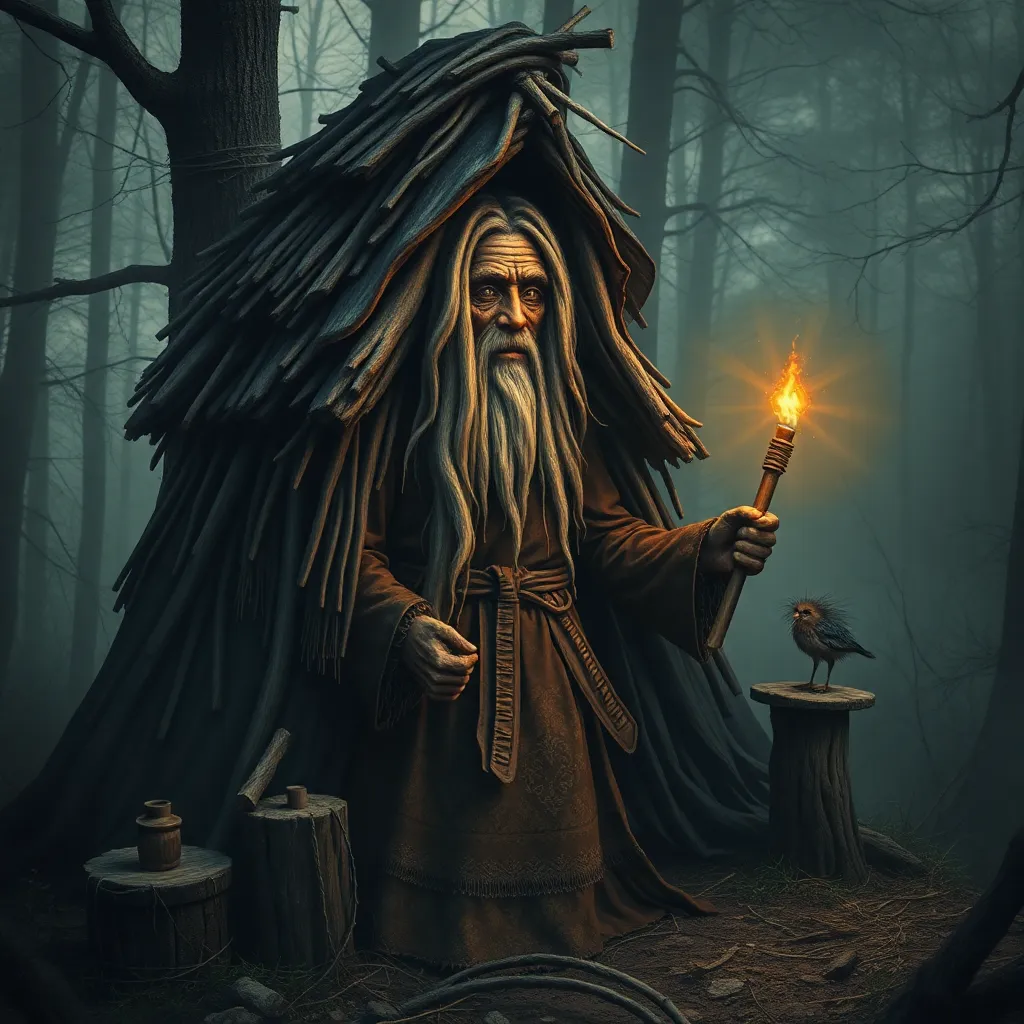Baba Yaga in Russian Folklore: A Deep Dive into the Myths and Legends
I. Introduction
Baba Yaga is one of the most iconic figures in Russian folklore, a character who embodies the complexities of nature, wisdom, and the duality of good and evil. Often depicted as a fearsome witch, she occupies a unique space in the pantheon of mythical beings, serving both as a villain and a guide. This article aims to explore the myths, legends, and cultural impact of Baba Yaga, delving into her origins, characteristics, and the lessons her stories impart.
II. The Origins of Baba Yaga
The origins of Baba Yaga can be traced back to ancient Slavic beliefs and oral traditions. Historical context shows that she has been a part of folklore for centuries, with some of the earliest mentions appearing in texts from the 18th century. She is often associated with the wilderness and the untamed aspects of nature, symbolizing the challenges and dangers that lie beyond the safety of the village.
Over time, Baba Yaga’s character has evolved. Initially viewed purely as a malevolent figure, she gradually became more nuanced, embodying aspects of wisdom and transformation. This evolution reflects the changing attitudes of society toward nature and femininity, illustrating her complexity as a character.
III. The Iconic Appearance and Attributes
Baba Yaga is often described with distinct and striking physical characteristics that contribute to her fearsome reputation. Common descriptions include:
- Long, unkempt hair, often gray or white
- A bony, emaciated body
- Sharp, pointed teeth
- Clothing made from rags or items associated with the forest
The symbolism of her appearance is profound. Her bony frame and wild hair evoke the image of a fierce, untamed woman, representing the raw and unpredictable forces of nature. Her sharp teeth suggest her ability to consume and destroy, but they also symbolize her role as a provider of wisdom and guidance, embodying the duality of nourishment and danger.
IV. Baba Yaga’s Home: The Chicken-Legged Hut
One of the most fascinating aspects of Baba Yaga is her home—a hut that stands on chicken legs. This whimsical yet eerie abode serves as a symbol of her connection to the natural world and the magical properties of her character. The hut is typically described as having the ability to move and turn around, making it a place of both refuge and peril.
The significance of the chicken-legged hut can be interpreted in several ways:
- It represents the liminal space between the known and the unknown.
- The mobility of the hut symbolizes Baba Yaga’s elusive nature.
- It serves as a barrier to those seeking her out, emphasizing the idea that knowledge and power come with challenges.
V. Baba Yaga’s Role in Folktales
Baba Yaga appears in numerous folktales, each showcasing different themes and motifs. Common elements in stories featuring her include:
- Tests of courage and cleverness
- Encounters with nature and the supernatural
- Interactions with young protagonists seeking wisdom or assistance
Her character can be analyzed in different ways, as she often embodies roles such as:
- The villain: representing the dangers of the forest and the unknown.
- The mentor: offering guidance and challenges to those who prove themselves worthy.
- The neutral figure: reflecting the ambiguity of nature, neither inherently good nor evil.
VI. Baba Yaga in Modern Culture
In contemporary culture, Baba Yaga has found her way into various forms of literature, film, and art. She has inspired numerous adaptations and interpretations, often reflecting modern themes while retaining her folkloric roots. Notable representations include:
- Children’s books that illustrate her as a quirky, misunderstood character.
- Films that portray her as a powerful witch, often with a blend of horror and humor.
- Art that captures her enigmatic nature and the magical elements of her stories.
The impact of Baba Yaga on contemporary interpretations of folklore is significant, as she continues to resonate with audiences, symbolizing the complexities of femininity, power, and the relationship between humanity and nature.
VII. The Lessons and Morals of Baba Yaga Stories
Baba Yaga’s tales often reflect deep-rooted values and lessons that resonate across generations. Key themes include:
- Wisdom: Her stories emphasize the importance of knowledge and understanding.
- Cunning: Characters often must rely on cleverness to navigate challenges.
- Resilience: The journey through Baba Yaga’s tales often requires perseverance and strength.
The duality of her character also serves as a teaching tool, illustrating that moral ambiguity exists in the world. Characters who interact with Baba Yaga learn that strength can come from embracing complexity, and that wisdom often lies in understanding both sides of a situation.
VIII. Conclusion
In summary, Baba Yaga is a multifaceted figure in Russian folklore, embodying the complexities of nature, femininity, and morality. Her stories continue to captivate audiences with their rich symbolism and profound lessons. As a character who straddles the line between good and evil, she represents the dualities of life, making her an enduring symbol in Russian culture and beyond.
Ultimately, Baba Yaga’s legacy is one of resilience, wisdom, and the invitation to explore the unknown. Her tales remind us that within every challenge lies an opportunity for growth and understanding, ensuring her place in the hearts and minds of those who encounter her stories.



